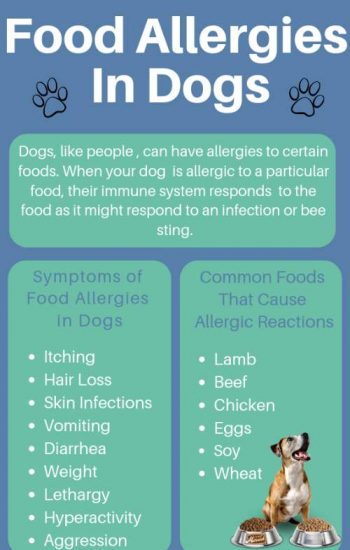
How To Tell If Dog Allergic To Food. Even if your vet finds a reason for your dogs skin problems they may still suspect that an adverse food reaction is at least partially responsible since for example yeast infections can develop as a result of food allergies. The cells in the body respond by releasing histamines and these compounds lead to responses such as itching or swelling. Dogs with food allergies can have symptoms that manifest in the skin and in the gastrointestinal tract ie. A food allergy happens because of a pets immune system.

There are different ways that seasonal allergies can be diagnosed according to PetMD. Your vet may have prescribed a seasonal dose of Benadryl or Claritin but the itching persists. Symptoms of anaphylaxis include hives a swollen face or muzzle drooling vomiting and diarrhea. An allergy is characterized by food proteins that trigger certain responses by the immune system. To run a food trial you would feed your dog a limited-ingredient or hypoallergenic diet over an 8- to 12-week period. Having a dog with allergy issues can be incredibly frustrating for you and your dog.
Very similar to allergy testing in humans with this method a small amount of test allergens are injected under your dogs skin.
When a dog or cat has a food allergy their immune system. There is a lot of research going on to determine exactly what makes the immune system more likely to express allergies. Having a dog with allergy issues can be incredibly frustrating for you and your dog. A food allergy happens because of a pets immune system. It may progress to difficulty breathing. To confirm whether your dog is allergic to something in his food your veterinarian might recommend running a food trial.